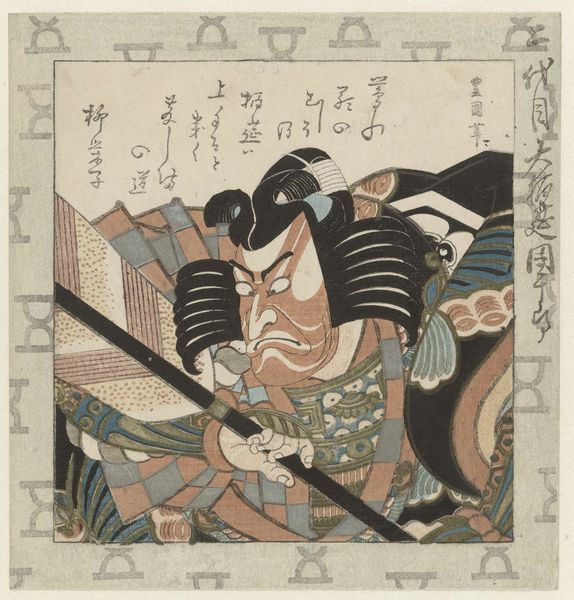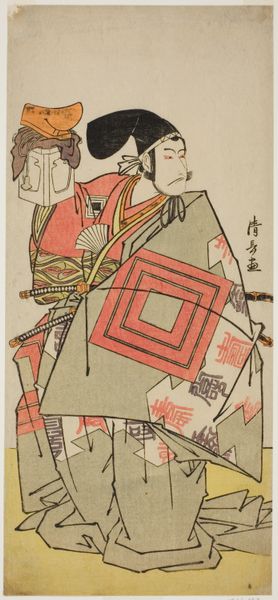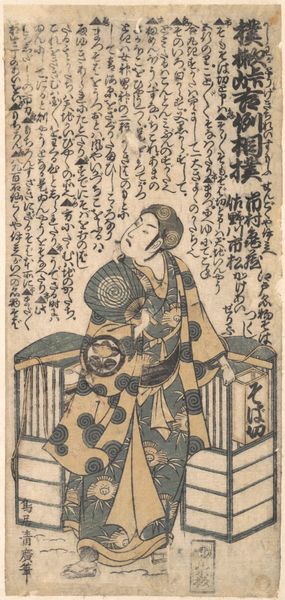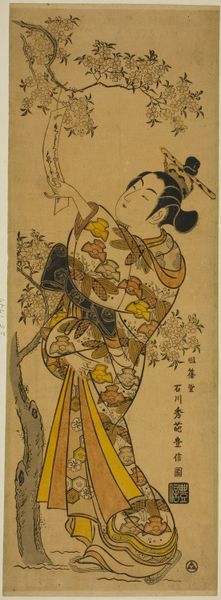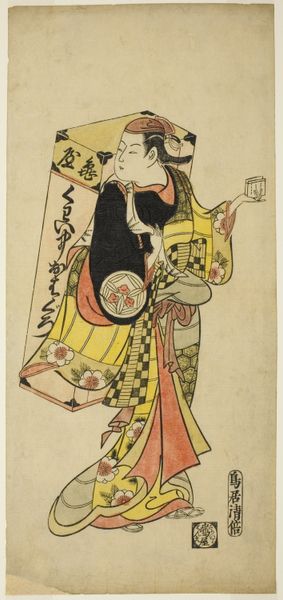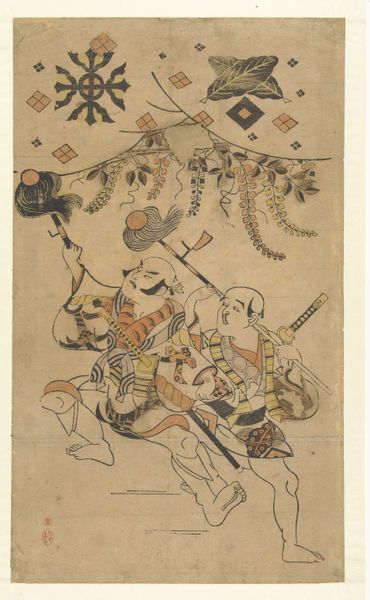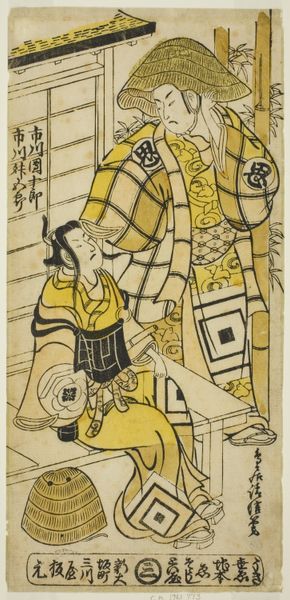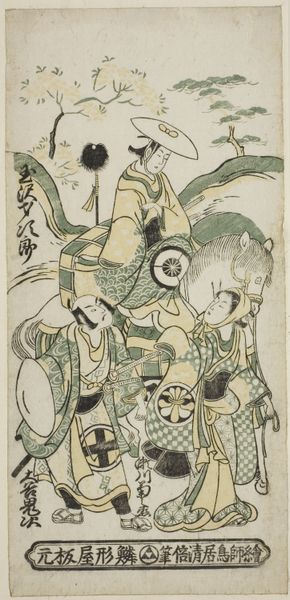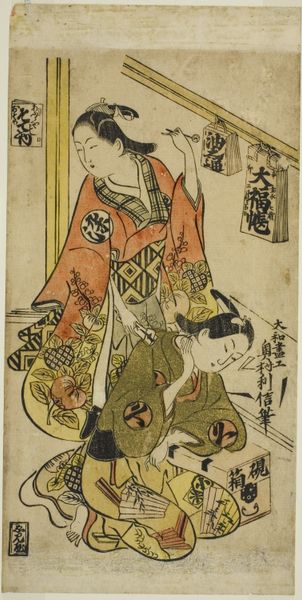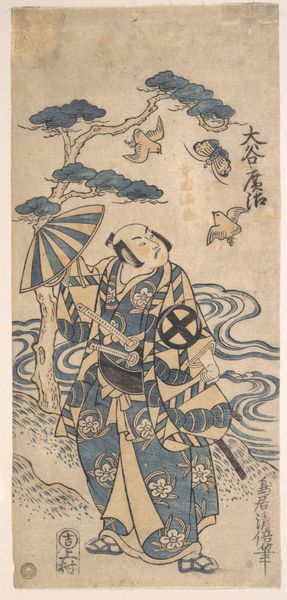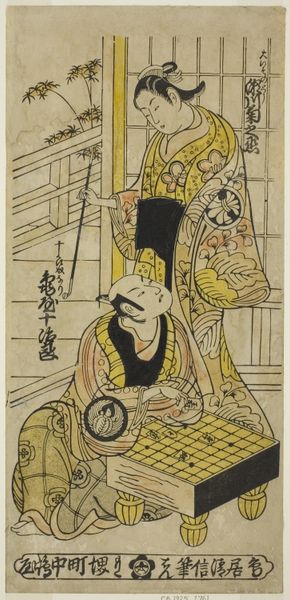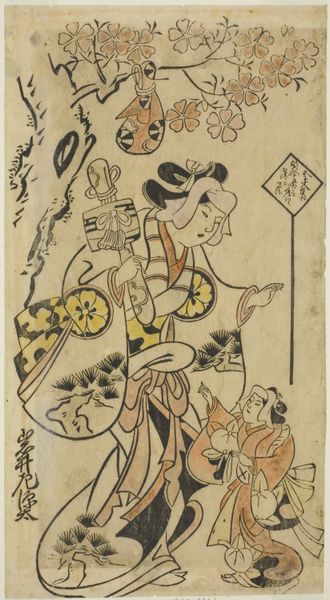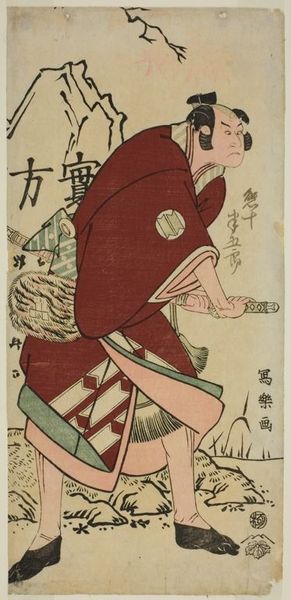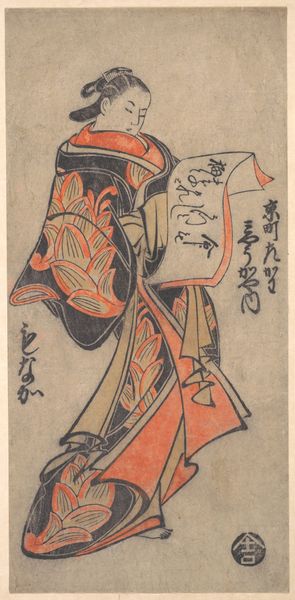
The Actor Ichikawa Danjuro II as Soga no Goro in the play "Soga Koyomi Biraki," performed at the Nakamura Theater in the first month 1723
0:00
0:00
#
portrait
#
ink drawing
# print
#
asian-art
#
ukiyo-e
#
figuration
#
personal sketchbook
Dimensions: 33.9 × 16 cm (13 3/8 × 6 5/16 in.)
Copyright: Public Domain
Editor: This is a print by Torii Kiyotomo from 1723, housed at the Art Institute of Chicago. It depicts the actor Ichikawa Danjuro II. The bold lines and flat planes of color create a really striking effect. What draws your eye when you look at this? Curator: What I see here is a deliberate construction of identity, not just of the actor as a performer, but of the very societal roles he’s embodying. Notice the text surrounding him. It's not just decoration. These words frame and define him within specific narratives of the time. What roles were considered important? Editor: You mean the play that he’s in? Is the text excerpted from that? Curator: It's more than just the play, I think. The *ukiyo-e* tradition itself served as a commentary on the transient pleasures of the floating world. These prints democratized access to art and fame, immortalizing not emperors or gods, but actors, courtesans, and the urban lifestyle. He is literally covered and surrounded by these concepts. The clothing as performative. Even the pose with that script as him laying claim. Think of this actor, now, existing both inside and outside the narrative he's performing. Is he still playing a part outside of the play? Is he Soga no Goro? Editor: That makes me see the art differently. It's not just a portrait of a famous actor but an exploration of fame, identity, and representation in a specific time and place. I guess those prints helped shape not only the actors careers but also society's perception of them. Curator: Precisely. By engaging with the art through this lens, we uncover how representations impact identity construction and social dialogue. Understanding what we celebrate is powerful! Editor: That’s really helpful. Thank you! I’m excited to dig a bit deeper into *ukiyo-e* art and that cultural context now.
Comments
No comments
Be the first to comment and join the conversation on the ultimate creative platform.
